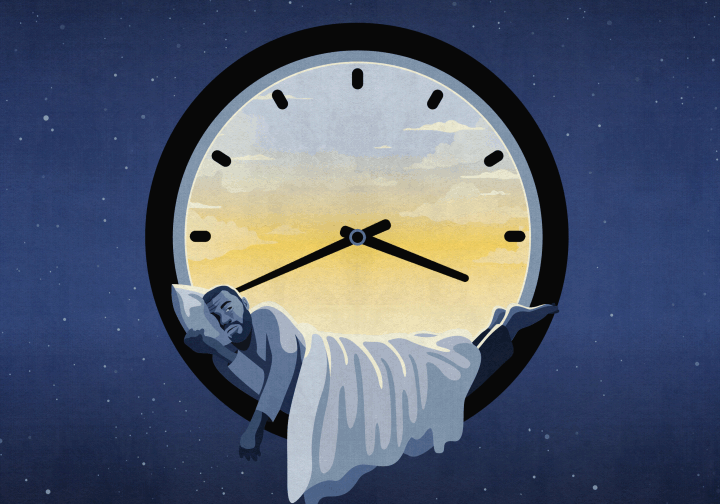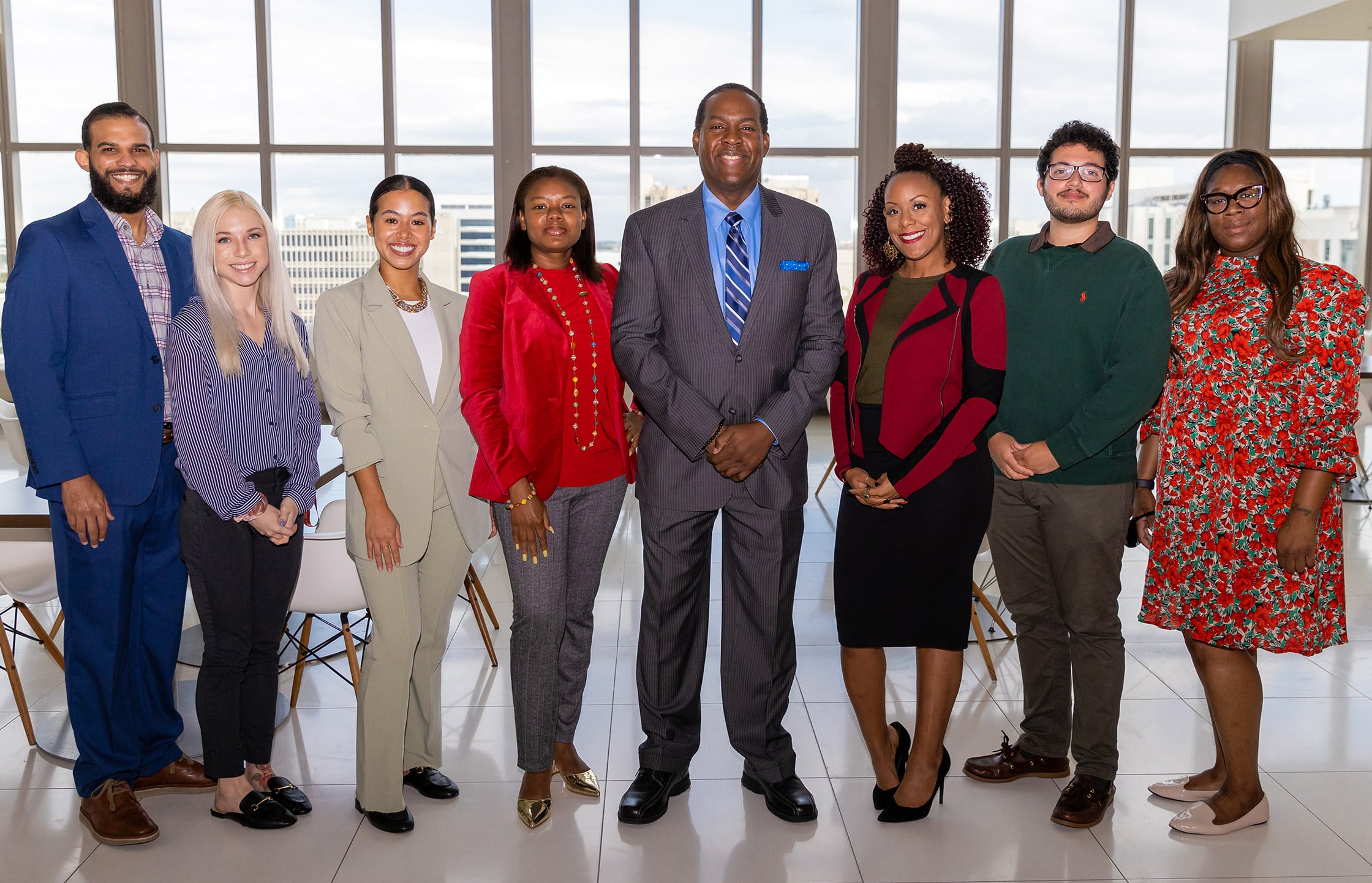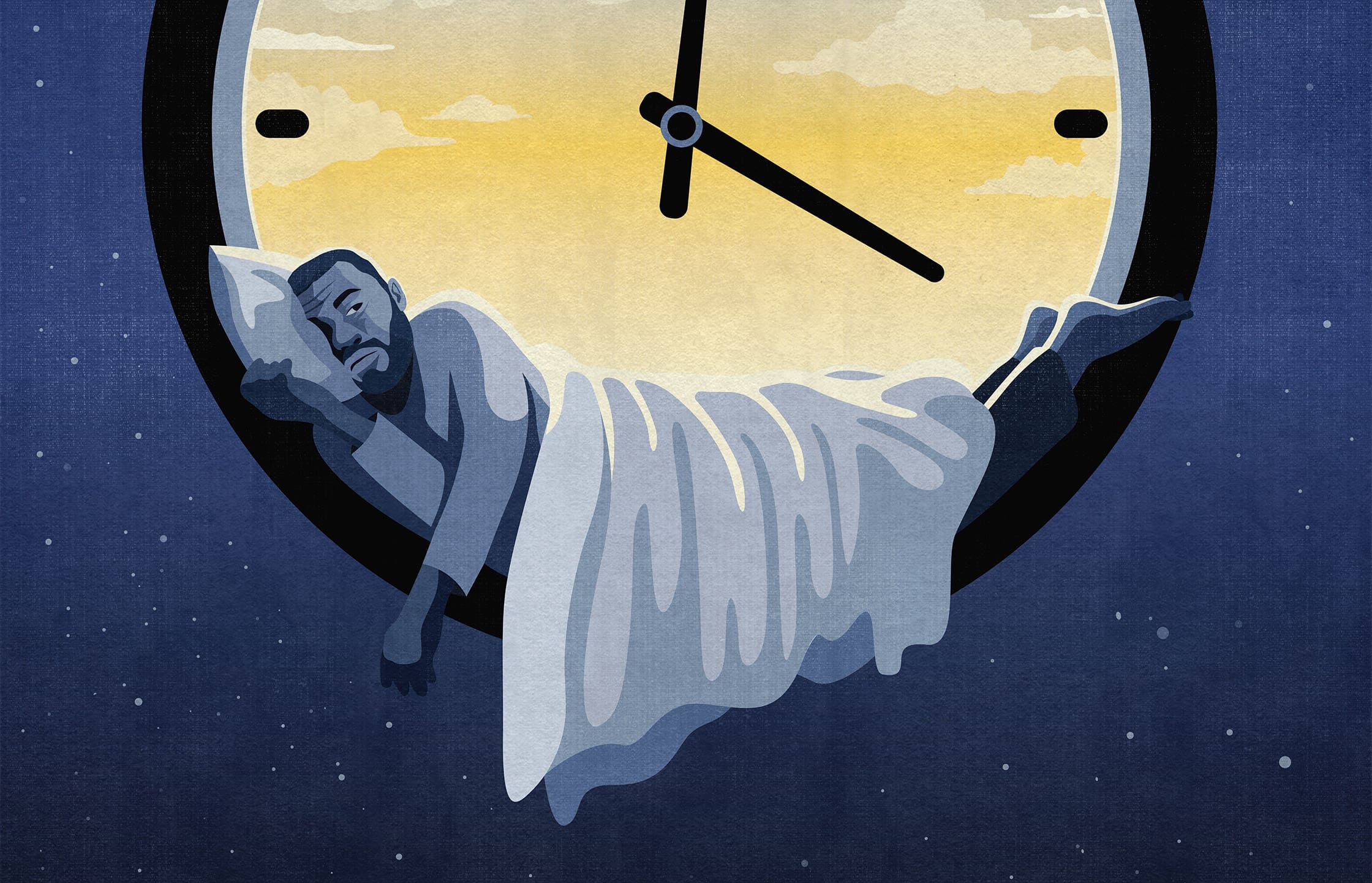Why Do Some Body Clocks Lose Time?
A newly recruited team of sleep scientists will study the impact of circadian rhythms on human health
By Josh Baxt
Illustration by Benedetto Cristofani
Photography by T. J. Lievonen

W
hy are there disparities in sleep quality among different racial and ethnic groups? Why are people with troubled sleep patterns unlikely to tell their doctor despite the potentially serious effects on their health? And what can be done to better understand and reduce those disparities?
To begin searching for answers to those questions, the Miller School of Medicine recently recruited renowned sleep scientist Girardin Jean-Louis, Ph.D., to direct its new Translational Sleep and Circadian Sciences (TSCS) program. The program seeks to rigorously investigate how sleep and circadian rhythms (our internal 24-hour clocks) influence both good health and chronic conditions including obesity, dementia and heart disease.
“We are developing and testing interventions that reduce the risks of cardiovascular and brain injury by better understanding the roles played by sleep disruption and circadian misalignment,” said Dr. Jean-Louis, who came to Miami from the NYU School of Medicine. “We are also training and mentoring new generations of sleep and circadian scientists, including underrepresented minority investigators, to achieve health equity in all U.S. communities.”

Translational Sleep and Circadian Sciences team, from left, Clarence Earl Locklear, M.A., Kaitlin Hahn, Crystal Vidal, M.B.A., Judite Blanc, Ph.D., Girardin Jean-Louis, Ph.D., Arlener D. Turner, Ph.D., Bruno Oliveira, and Tocarra Ware.
Sleep Disparities
Black people sleep less than white people — losing an average 30 minutes — but the reasons are complicated, Dr. Jean-Louis notes. Sunlight exposure, particularly in the mornings, has a positive impact on sleep. But even in Miami, not everyone is taking advantage of the sunshine.
“Laboratory data has shown that Blacks are isolated from regular time cues,” Dr. Jean-Louis said. “As a result, if you compare endogenous circadian rhythms, white men are close to 24 hours, but for Blacks, it’s only about 23.4. If you disturb someone’s circadian rhythms, they tend to become obese and have problem with metabolism and, to some degree, blood pressure.”
TSCS researchers will investigate the mechanisms underlying these disparities and develop potential remedies. The first step is to create a circadian laboratory.
“We’re building a lab to conduct both sleep and circadian research,” Dr. Jean-Louis said. “There, we can control all time cues, so study participants will be completely devoid of information about time, and we can study how circadian rhythms become decoupled.”
The ultimate goal is to develop new models that help alleviate health disparities in minority communities. Dr. Jean-Louis believes that by better managing sleep and circadian rhythms, clinicians can treat a wide range of chronic diseases at once.
Sleep Misconceptions
While the research is compelling, even positive results could be ineffective if patients don’t come in for care. Some communities may not recognize that dysfunctional sleep can be a deadly problem, and those cultural biases can be challenging to break through.
“Blacks are not likely to report any type of sleep problem at all,” Dr. Jean-Louis said. “If we ask how they are sleeping, the majority will say they sleep just fine. When we drill down, we find they are aware there’s a problem, but in the scheme of things, sleep is not something they really worry about.”
Sometimes people simply have too much on their plates to think about their sleep habits. In other cases, communities have long-held misconceptions about what constitutes healthy sleep. Snoring, for example, is often considered a good thing.
“They think Uncle Bob is in a deep sleep, but I have to disappoint them,” Dr. Jean-Louis said. “Unfortunately, Uncle Bob’s snoring is actually a risk that he could have a heart attack or stroke because he’s not breathing well. But because people don’t often report these symptoms in a clinical encounter, they don’t get referred for a sleep test.”
Community Outreach
Sleep disorders are common regardless of community. But how do clinicians treat patients in a way that’s sensitive to their cultural foundations? Even when people know they have a problem, they don’t seek care. Men are particularly reluctant.
“Men often don’t come in until their wives threaten them,” Dr. Jean-Louis said. “Do something about your snoring, or I’m sleeping in the other room.”
As a result, many patients wait until they are so sick that their only option is the emergency room. In some cases, people with sleep apnea (breathing intermittently while asleep) have a heart attack or stroke, which is easily preventable, but only if they seek care.
To help solve this problem, Dr. Jean-Louis has adopted a proactive approach, incorporating community outreach into his lab’s work to bring the message home.
“I learned in New York that you have to go to their safe spaces: churches, barbershops, beauty salons, civic organizations,” Dr. Jean-Louis said. “This is where people congregate and feel they’re in control. Tailoring the education to their needs and going where they live is really important.”
These visits provide a whole series of aha moments. People recognize their own potential health problems and sometimes diagnose how a relative might have died. The phrase “dying in their sleep” takes on whole new meaning. Even more important, they are more likely to seek care, refer others and participate in clinical trials.
The COVID Dividend
Many of Dr. Jean-Louis’s patients have gone on to become change agents, going back to their communities and delivering these important messages about sleep health.
“Now I go back to churches I’ve visited before, and they tell me, with a lot of pride, that they’ve been able to help people sleep better,” Dr. Jean-Louis said.
While in New York, Dr. Jean-Louis’s team trained 25 sleep health educators for a clinical trial that ended a few months before the coronavirus pandemic. However, those educators didn’t stop when the trial ended — they became information agents in their communities, which had a great impact.
“They were coming to us and asking: What do you know about COVID-19? How do we get infected? What can we do to protect ourselves? Should I take the vaccine? All of these are important questions,” Dr. Jean-Louis said. “And because we had built trust with them, we could communicate the information they needed to help save lives.”
But the pandemic made in-person interactions impossible for several months due to social distancing guidelines, and it became difficult for Dr. Jean-Louis to collect data for his funded studies. In response, his team, led by Azizi Seixas, Ph.D., designed a novel digital health equity tool kit to monitor environmental exposure, sleep, and heart and brain health in minority populations.
That approach will continue in South Florida, using a citizen-scientist strategy to maintain close contact with the community online and by phone. Plans include keeping the community engaged via a monthly newsletter and by posting tailored infographics on social media to raise awareness of the importance of sleep, heart and brain health.![]()



